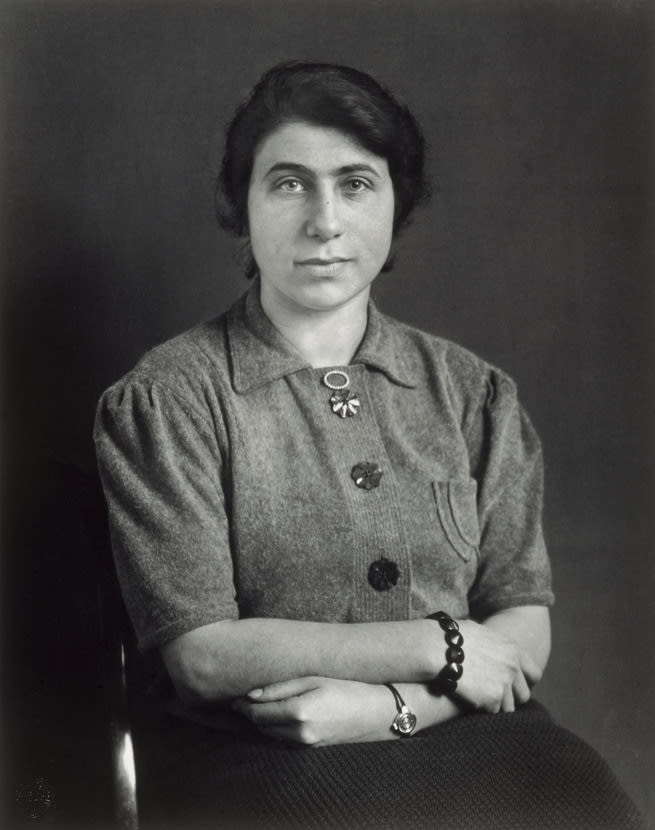
- Artist/Maker:
- August Sander
- Bio:
- German, 1876-1964
- Title:
- Persecuted Jewess
- Portfolio/Series:
- Persecuted Jews
- Date:
- c. 1938, printed 1990
- Medium:
- Gelatin silver print
- Dimensions:
- 10 1/8 × 8 in. (25.7 × 20.3 cm)
- Credit Line:
- Purchase: Fine Arts Acquisitions Committee Fund, Lillian Gordon Bequest, by exchange, and Anonymous Gift
- Accession Number:
- 1999-70.7
- Copyright:
- © Die Photographische Sammlung/SK Stiftung Kultur - August Sander Archiv, Cologne; ARS, New York, 2009
Not On View
The twelve portraits in this series were taken by the German photographer August Sander in Cologne and nearby towns around 1938, at the height of Hitler's power. Although Sander's Jewish subjects were probably friends and neighbors, he labeled these photographs simply "Persecuted Jews." It is possible that Sander, who was not Jewish, made the photographs to help desperate German Jews obtain exit papers. Sander himself had been a victim of Nazi persecution in 1934 when many of his plates were destroyed by the authorities and his eldest son was imprisoned for his antifascist activities.
Born in 1876 in the Rhineland, Sander became one of the most influential modernist photographers. During the 1920s, he was strongly influenced by a style of sharply focused social realism known as Die Neue Sachlichkeit - the New Objectivity. Applying this objectivity to photography, Sander believed that a systematic documentation of different human types, grouped according to their roles in German society, would provide a truthful record of the time. To this end, he set about making photographs of archetypes rather than individuals: the man or woman of the soil, the philosopher, the revolutionary, the sage, and so on. Sander called this monumental project "People of the Twentieth Century". His compositions were classically composed, his settings were realistic but carefully chosen, and his subjects were presented without sentiment.
The outbreak of World War II forced Sander to leave Cologne in 1939, and to retreat to a small village in the countryside, taking with him only his most valuable negatives. A decade after the war, his work attracted the attention of Edward Steichen, who selected some of his photographs for the landmark exhibition. "The Family of Man," held at The Museum of Modern Art in 1955. August Sander died in Germany in 1964 at the age of eighty-seven.
Born in 1876 in the Rhineland, Sander became one of the most influential modernist photographers. During the 1920s, he was strongly influenced by a style of sharply focused social realism known as Die Neue Sachlichkeit - the New Objectivity. Applying this objectivity to photography, Sander believed that a systematic documentation of different human types, grouped according to their roles in German society, would provide a truthful record of the time. To this end, he set about making photographs of archetypes rather than individuals: the man or woman of the soil, the philosopher, the revolutionary, the sage, and so on. Sander called this monumental project "People of the Twentieth Century". His compositions were classically composed, his settings were realistic but carefully chosen, and his subjects were presented without sentiment.
The outbreak of World War II forced Sander to leave Cologne in 1939, and to retreat to a small village in the countryside, taking with him only his most valuable negatives. A decade after the war, his work attracted the attention of Edward Steichen, who selected some of his photographs for the landmark exhibition. "The Family of Man," held at The Museum of Modern Art in 1955. August Sander died in Germany in 1964 at the age of eighty-seven.
Information may change as a result of ongoing research.